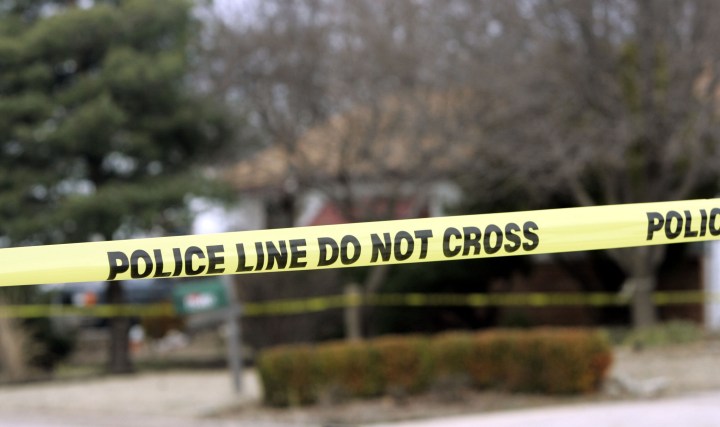
The big business of true crime
Share Now on:
The big business of true crime

The Netflix show “Dahmer — Monster: The Jeffrey Dahmer Story,” a fictionalized account of the serial killer’s life, became the streaming giant’s second-most-watched English-language series three weeks after its September debut.
It was helmed by Ryan Murphy, the creator of shows like “Glee” and “American Horror Story,” who produced the show under his $300 million deal with Netflix.
The show’s success underscores the popularity of true crime, where there’s big money to be made. Projects can end up selling for millions of dollars.
Back in 2020, The New York Times paid $25 million for Serial Productions, the company behind the popular nonfiction “Serial” podcast, whose first season covered the 1999 murder of Hae Min Lee, a high school student from Baltimore.
While the true crime genre has long been popular fodder for the small screen — including documentary series like “Unsolved Mysteries” and the news and documentary show “Dateline” — its footprint has seemed to grow exponentially.
True crime now consists of seemingly countless sub-genres, spanning multiple platforms that include network and cable television, streaming services and podcasts. It’s so popular that there are entire TV networks that are devoted to true crime stories, like Investigation Discovery and Oxygen, said Ed Hersh, a veteran TV executive, industry consultant focusing on true crime and an adjunct faculty member at Syracuse University.
Hersh said true-crime stories encompass ride-along reality shows like “Cops,” the crime-science show “Forensic Files,” the documentary limited series “Making a Murderer” and scripted dramas, like Netflix’s “Dahmer” series.
The taxonomy of true crime can also break down in other ways — beyond whodunits, there are also “whydunits.”
“You’re going inside the criminal mind. Why would somebody do it? We know who did it. Now we want to understand why,” Hersh said.
Then there are true-crime stories that he calls “howdunits.” Think: the Theranos scandal, where founder Elizabeth Holmes was found guilty of misleading investors about her blood-testing company. Those cases explore questions like: “How could somebody have gotten away with this?” Hersh said.
The biggest area of growth, despite the popularity of the fictionalized “Dahmer,” is in nonfiction, he said.
How true crime shows are developed
“It’s a long, laborious process to get something on air,” said Rob Dorfmann, who founded the production company Strong Island Films with his wife, Cindy Dorfmann.
The Dorfmanns have produced true crime films and series for Lifetime Movie Network and Discovery ID, including “My Uncle Is the Green River Killer” and “The Real Story With Maria Elena Salinas.” More recently, they produced and directed “Making an Exoneree,” a 2021 documentary that follows Georgetown University students reinvestigating likely wrongful conviction cases.
Cindy Dorfmann explained the appeal of true crime for audiences is that “they want to know what makes people kill people, why murder happens, how people go missing. It’s all wrapped up in these different packages. There’s the mystery of what happened. And then there’s also the human psyche — trying to figure it out. Why would somebody do something like that?”
Because there’s so much competition in the true-crime space, “you have to have a unique entry point,” Rob Dorfmann said.
“What’s the unique storyline that you have that no one else has?” he said. “It’s like anything else — you’re competing in the marketplace.”
Based on his experience, Rob Dorfmann said television networks like Oxygen or ID might pick up a six-episode order of a series if they approve a pitch.
“In the past, they used to pick up, like, 10,” he said. “But with the economy and the economics of the television industry, they want to see if it does well first. Sometimes they just pick up a pilot.”
Budgets for those episodes could range anywhere from $400,000 to $600,000 per episode.
However, the cost to produce shows and films can vary, depending on whether you’re using your phone to film footage or more sophisticated equipment.
“We own all of our equipment … and we own our editing systems. We’ve invested in our company, so we don’t have to pay for those things,” Cindy Dorfmann said. “But it can be quite costly.”
If you’re doing it right, she said, producing and editing a 90-minute film can cost more than $1 million. “It’s expensive,” she said.
But true-crime documentaries generally cost less than scripted, fictionalized TV shows or movies, where you have to hire writers, directors, cinematographers and stars, said Hersh, the industry consultant.
Variety reported in 2017 that FX spent between $3.5 million to $4 million an hour on its dramas, with Ryan Murphy’s “American Crime Story” costing close to $6 million.
How the business of true crime has changed
Hersh said advertisers have begrudgingly accepted true crime. “The audience loves it, and the advertisers go where the audiences go,” he said. “Advertisers like to fish where the fish are.”
True-crime storytelling has also evolved into an ecosystem, where the popularity of a story on one medium can lead to adaptations on others.
“There’s sort of a podcast-to-TV show and TV show-to-podcast pipeline,” Hersh said. “Podcasts inspire television programs and television programs inspire podcasts.”
For example, Cindy and Rob Dorfmann turned the investigative podcast “Up and Vanished” into a TV show for Oxygen. They’ve also done the reverse, turning an episode they made for the TV adaptation of “Up and Vanished” into what is now their podcast, “Partners in True Crime,” which focuses on the disappearance of Oklahoma residents Molly Miller and Colt Haynes.
“We decided, ‘Oh, we have all of this material that obviously you can’t tell in an hour. So let’s do a deeper dive. And the only way to really do a deeper dive was through the podcast,” Cindy Dorfmann said. “The podcast has been very successful. We’ve had over 300,000 downloads in four months.”
The podcast includes interviews with family members of Miller and Haynes, notably Miller’s cousin Paula Fielder, who has been trying to solve her disappearance for nearly a decade.
“What the podcast for me has always been since we met Paula … was what the family goes through and how horrible this is and how we can stop this stuff from happening,” Cindy Dorfmann said.
The ethics of true crime
As true crime has risen in popularity, so has backlash, with critics calling the genre exploitative and pointing out how some of the stories focus too much on the perpetrators.
Eric Perry — a relative of Errol Lindsey, one of Dahmer’s victims — said on Twitter that Netflix’s “Dahmer” show was “retraumatizing.”
“I want people to understand this is not just a story or historical fact, these are real people’s lives. [Lindsey] was someone’s son, someone’s brother, someone’s father, someone’s friend that was ripped from [our] lives,” Perry told the Los Angeles Times.
Bethonie Butler, who covers TV and pop culture for The Washington Post, said in an interview with NPR that it can be difficult to make true crime stories without revictimizing the people at the center of these cases.
But in a show like Netflix’s “The Keepers” — which explores the case of Cathy Cesnik, a Baltimore nun who was murdered more than 50 years ago — the focus remains on Cesnik.
“All throughout the episodes, you really feel like Sister Cathy is at the center of it,” Butler said.
There’s a lot happening in the world. Through it all, Marketplace is here for you.
You rely on Marketplace to break down the world’s events and tell you how it affects you in a fact-based, approachable way. We rely on your financial support to keep making that possible.
Your donation today powers the independent journalism that you rely on. For just $5/month, you can help sustain Marketplace so we can keep reporting on the things that matter to you.


















